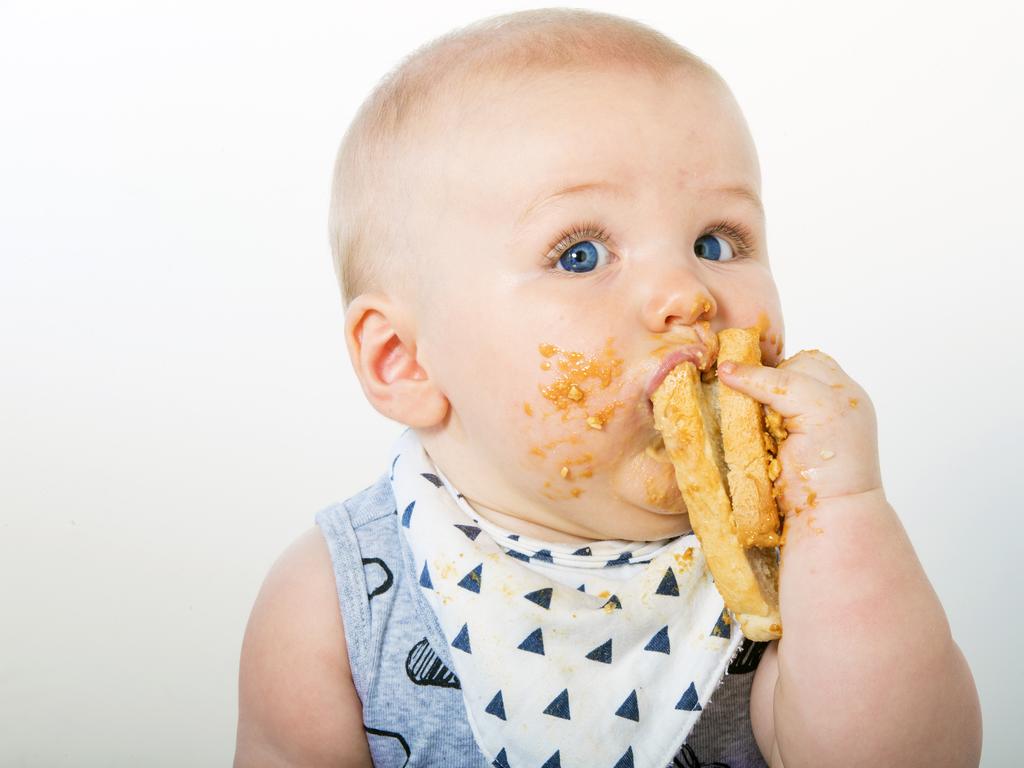
27 Oct When can my baby eat peanuts?
3 min. readYou’ve introduced solid foods into the diet and your baby is doing great with them! Now you have the famous question regarding peanuts. When is the most appropriate time to introduce peanuts or peanut-containing products into a baby’s diet? This is a very common question among parents and one that can be confusing for parents as recommendations have changed over the years.
The most appropriate time for peanut introduction
Before 2015 it was recommended that parents wait to introduce peanuts into a child’s diet. Due to the potential high risk of peanut allergies, it was thought that later introduction was the best practice. However, in 2015 Learning Early About Peanut Allergy (LEAP) study was completed and found there was an 81% decrease in peanut allergy for high-risk infants when introduced earlier. This study specifically found that an effective way of preventing peanut allergy was if parents established a consistent introduction of peanut in the baby’s diet within the first 11 months of the baby’s life.
How to introduce peanut
Now that we’ve learned it’s best to introduce peanuts earlier in a baby’s life, the next question becomes “But how?’. Let’s take a closer look at a few key things to include when first starting to introduce peanuts. Begin by starting early. This could mean as early as 6 months of age. It is believed that this timeframe aligns best with the immune window and gives the baby the best chance of developing positive responses to new foods. Secondly, introduce one food at a time. So, when you go to introduce peanuts make sure you also are not introducing another new food into the baby’s diet at the same time. Always begin with a low amount of the food and then slowly increase it from there. Next, continue with the food, in this case, peanuts, multiple times a week for several months. Studies regarding this stage of the process noted that baby’s eating allergenic foods 2-7 times per week for 3-6 months or more were less likely to develop an allergy to that specific food. Unfortunately, families who were not able to give the baby the specific food that often or for that long did not notice any benefit to reducing food allergies. Keep in mind mom and dad that there may be rough patches along the way and the baby may be a picky eater at times. As hard as it is trying to push through those moments and continue with the food to allow your baby the best chance at preventing a food allergy is best. Besides, being a picky eater is common at this age. Don’t let that be discouraging to you.
Peanut Recipes
When it is time to start introducing peanut foods in your baby’s diet make sure first that you are choosing age-appropriate peanut foods. For example, whole peanuts and peanut chunks are choking hazards for babies and should not be incorporated into a young baby’s diet. Some safe alternatives that you can give your baby are peanut puffs, smooth peanut butter that can be thinned further with warm water or pureed fruit, or peanut flour or peanut butter powder.
Signs of food allergy
It is also very important to know potential signs of a food allergy. Possible signs include:
- Rash or hives on the mouth/face
- Swollen lips, tongue, or face
- Itching
- Vomiting
- Coughing
- Pale or bluish-colored skin
- Trouble breathing or hearing wheezing when the baby breathes
- Baby suddenly being tired
What to do if you suspect a reaction?
If you notice any of the potential signs of a food allergy or reaction listed above immediately stop giving that food and seek medical help. Call 9-1-1 or take your baby to the nearest emergency department. If you have a pre-developed plan for food allergies/reactions from your pediatrician, follow that plan.

